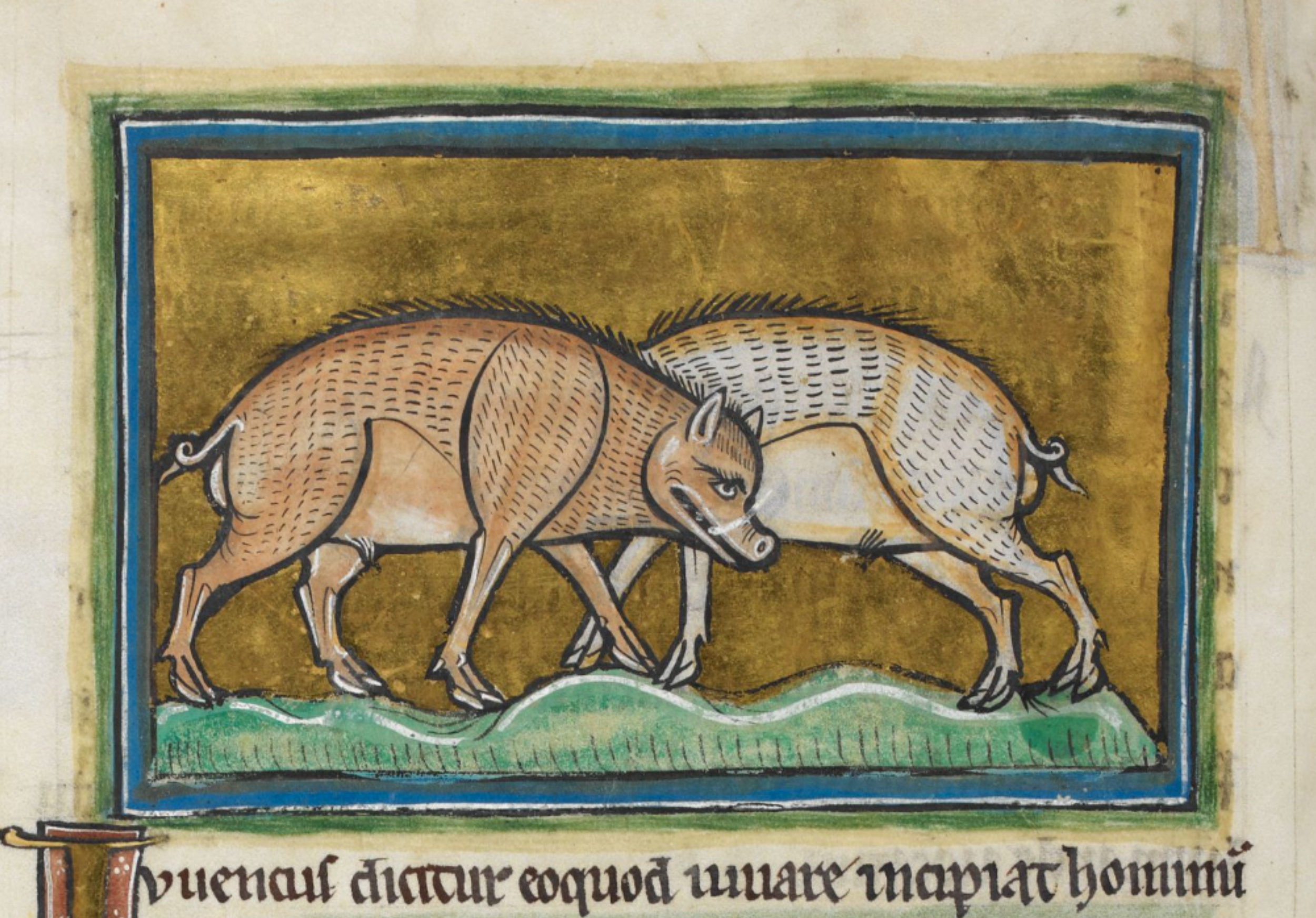Boar, Rochester Bestiary, c.1230
The boar is a ferocious and an aggressive animal and therefore, it became symbolic of wrath and unbridled violence. In Christian allegory, the boar may represent the dangers of unchecked anger and the destructive consequences of sinful behaviour.
In some medieval Christian contexts, particularly in regions where paganism persisted or where there was conflict with non-Christian cultures, the boar may have symbolised pagan beliefs or heretical practices. This association may have been influenced by pagan traditions that revered the boar as a symbol of strength and fertility.
Similar to other wild and untamed animals, the boar may be associated with demonic forces and evil influences. Its fierce nature and association with darkness and the wilderness made it a fitting symbol for the temptations and trials faced by Christians in their spiritual journey.
Despite its negative connotations, the boar's strength and resilience also made it symbolic of courage and determination in some contexts. This interpretation focused on its ability to confront challenges and emerge victorious, reflecting virtues valued by medieval Christian society.
In the Bible, the boar is mentioned in a few contexts to symbolise wildness or danger:
In Psalm NKJV 80:13: “The boar out of the woods uproots it, And the wild beast of the field devours it”, the Psalmist laments that the boar from the forest ravages the vineyard, symbolising the destruction wreaked upon Israel.
dicitur. Omne enim quod ferum est et inmite; abu-
sive agreste vocamus
A wild boar takes the name ăpĕr from its ferocity. The letter f was removed and replaced with p. The Greeks called the same wild creature suagros1. Everything that is wild and rude, we call it metaphorically rustic, rural.
Bibliography
David Badke, The Bestiary Blog: Animals in the Middle Ages, Boar, November 6 2023, https://bestiary.ca/beasts/beast197.htm
Josh Goldenberg (BA 2012) and Matt Shanahan (BA 2014), Logeion, November 2022, https://logeion.uchicago.edu/
Castiglioni, L. and Mariotti, S. (1996). Vocabolario della Lingua Latina: Latino-Italiano Italiano-Latino. Terza Edizione. Loescher Torino
Matthews, J. and Matthews C., (2010), The Element Encyclopedia of Magical Creatures, HarperCollins UK, London
Curley, M. J., Physiologus: A Medieval Book of Nature Lore (University of Chicago edition 2009)
Rackham, H., M.A., Pliny Natural History Volume III, Libri VIII-XI (London: William Heinemann Ltd, 1949)
Collins, A. H., M.A., Symbolism of Animals and Birds (New York: McBride, Nast & Company, 1913)
Henderson, C., The Book of Barely Imagined Beings (London: University of Chicago Press, 2013)
White, T. H., The Bestiary: A Book of Beasts (New York: G.P Putnam’s Sons, 1960)
Barney, S. A., Lewis, W. J., Beach A., Berghof O., The Etymologies of Isidore of Seville (New York: Cambridge University Press, 2006)
Footnotes
1 The Greeks called the wild boar suagros from σύς/sùs/(pig) and ἀγριος/agrios(wild).

